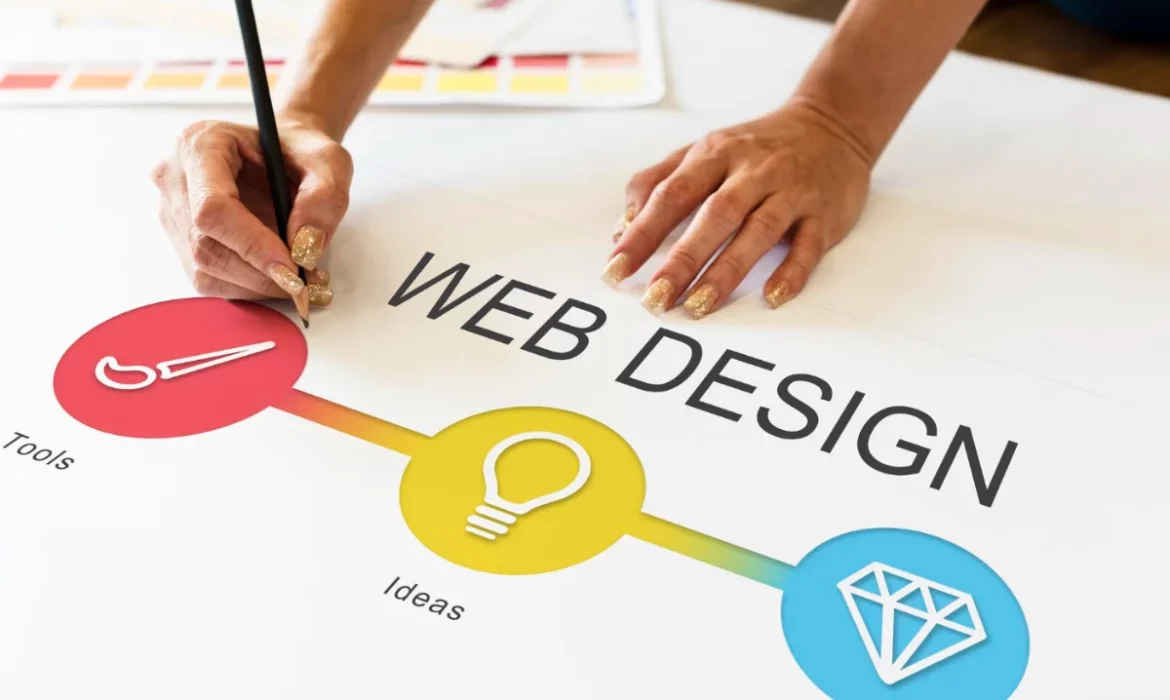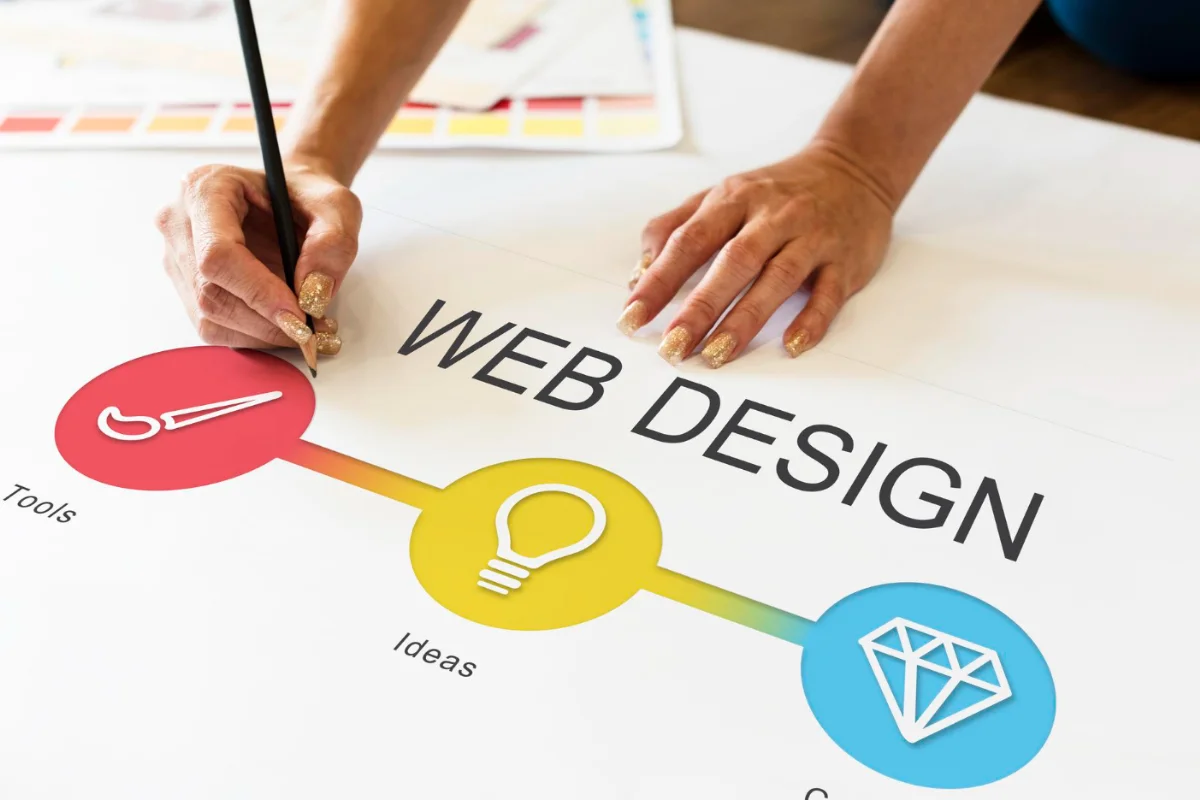
In this article, we will explore the top web design trends to watch out for in 2025 and discuss why it is important to stay up-to-date in this fast-paced industry.
The Significance of Staying Up-to-Date with Web Design Trends
Web design is more than just making visually appealing websites; it is also about establishing an experience for users. As technology advances and user expectations evolve, it is crucial for businesses to adapt their web design strategies accordingly.
It’s important for businesses to stay on top of the latest web design trends to enhance their website’s appeal, usability, and overall user experience.
Moreover, keeping a finger on the pulse of web design trends allows businesses to stay ahead of their competitors. Businesses can identify themselves and develop a distinct brand identity by combining cutting-edge design elements.
This can result in stronger customer engagement, higher conversion rates, and, eventually, better business success.
Also Read: Color Psychology in Marketing: The Importance, Influence, and Implementations
Key Factors Influencing Web Design Trends in 2025
Several key factors are expected to influence web design trends in 2025. The first factor is technological advancements.
As technology continues to evolve rapidly, web designers are presented with new tools and techniques that enable them to create innovative and immersive web experiences.
From augmented reality (AR) and virtual reality (VR) integration to voice user interfaces (VUI), these technological advancements will shape the way websites are designed and developed in 2025.
Another factor that will influence web design trends is changing user behavior and expectations.
As users become more tech-savvy and accustomed to seamless digital experiences, they expect websites to be intuitive, interactive, and personalized. Web designers will need to focus on creating user-centric designs that cater to these evolving expectations.
Lastly, societal and environmental factors will also play a role in shaping web design trends.
With increasing awareness about sustainability and eco-friendly practices, businesses are expected to incorporate sustainable design elements into their websites.
From using eco-friendly color schemes to optimizing website performance for energy efficiency, these design choices will reflect a commitment to environmental responsibility.
Trend #1: Minimalism and Simplicity in Web Design
In 2025, minimalism and simplicity will continue to dominate the web design landscape. Minimalistic designs focus on removing unnecessary clutter and distractions, allowing the content to take center stage.
This trend is driven by the need for clean and intuitive user interfaces that provide a seamless browsing experience across devices.
Minimalistic web design is characterized by ample white space, simple typography, and limited color palettes. It emphasizes clear navigation and intuitive user interactions, making it easier for visitors to find the information they need.
By embracing minimalism, businesses can create websites that are visually appealing, easy to navigate, and optimized for fast loading speeds.
Example: Appinventiv
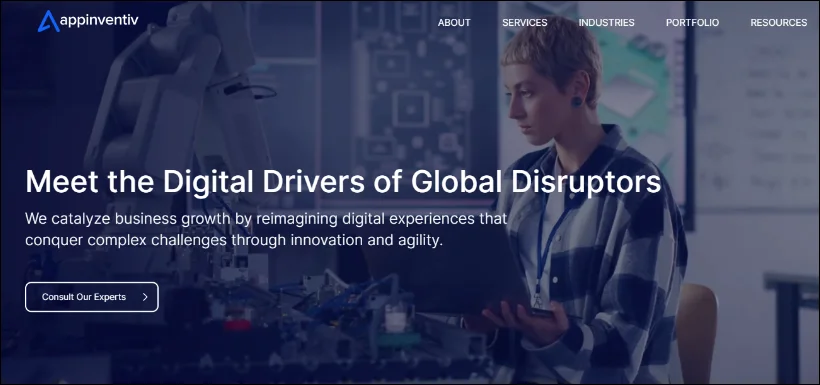
Description: This website exemplifies minimalism with its clean layout, ample white space, and simple color scheme. It showcases how effective a minimalist design can be in focusing user attention.
Read More: Color Psychology in Marketing
Trend #2: Dark Mode and Color Schemes
Dark mode has gained popularity in recent years and will continue to be a prominent web design trend in 2025.
Dark mode, which provides a sleek and futuristic appearance, is a visually appealing alternative to the standard light mode.
It reduces eye strain, especially in low-light environments, and can enhance the overall user experience.
In addition to dark mode, unique color schemes will also play a significant role in web design trends.
Bold and vibrant colors will be used to create attention-grabbing visual elements, while pastel and muted tones will be employed for a more calming and serene effect.
Web designers will experiment with gradients, duotones, and unconventional color combinations to create visually stunning websites.
In addition to dark mode, the choice of color palettes will significantly impact web design trends in 2025. Web designers are set to explore a wide range of color schemes to create attention-grabbing visuals and evoke specific emotions:
- Bold and Vibrant Colors: Expect to see websites using bright and lively colors to create striking visual elements that capture users’ attention and convey energy and excitement.
- Pastel and Muted Tones: For a more calming and serene effect, pastel and muted color tones will be employed. These gentle colors can evoke a sense of tranquility and sophistication.
- Experimental Combinations: Web designers will push boundaries by experimenting with gradients, duotones, and unconventional color combinations. This experimentation will result in visually stunning websites that break away from traditional color norms.
Recommended Tools for Color Palette Selection
Explore these helpful tools for effortless color palette selection and design inspiration:
- Adobe Color Wheel: This online tool allows you to create, explore, and save color palettes. It’s an excellent resource for finding harmonious color combinations.
- Coolors: Coolors is a color scheme generator that helps you discover new color palettes and experiment with various hues. It’s user-friendly and provides endless possibilities.
- Color Hunt: Color Hunt is a collection of hand-picked color palettes that you can browse and use in your designs. It’s a quick source of inspiration.
Example: Zudio
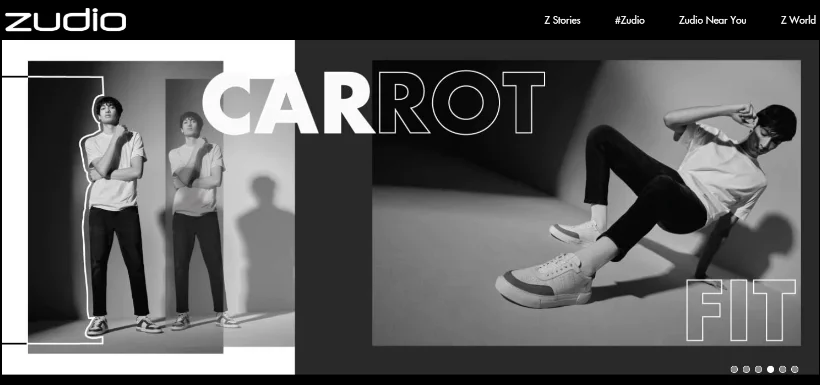
Description: Here, the dark mode is used to create a sleek and modern look, demonstrating the trend’s growing popularity. The website also features a unique color scheme that stands out.
Trend #3: Immersive and Interactive Experiences
As technology continues to advance, web designers are finding innovative ways to create immersive and interactive experiences for users.
In 2025, this trend will reach new heights with the integration of technologies such as augmented reality (AR) and virtual reality (VR).
These technologies will allow users to engage with websites in a more immersive and lifelike manner, opening up new possibilities for storytelling and product visualization.
Furthermore, interactive elements such as scroll-triggered animations, parallax scrolling, and micro-interactions will be used to enhance user engagement and create memorable browsing experiences.
These interactive features not only make websites more visually appealing but also provide users with a sense of control and interactivity.
Example: Nagarro
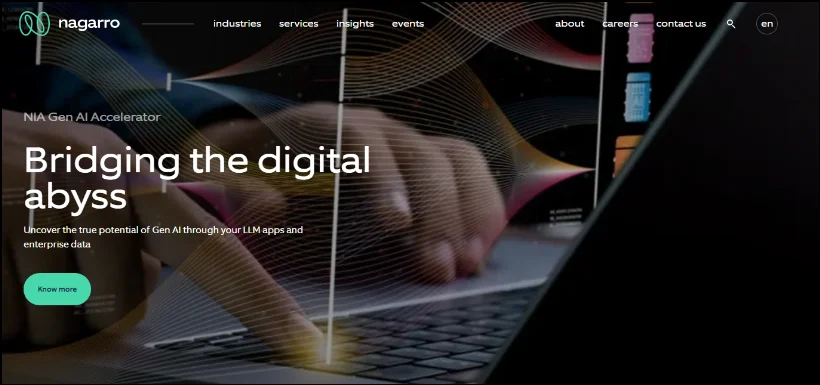
Description: This website integrates interactive elements like parallax scrolling and immersive storytelling, offering users a dynamic and engaging experience.
Trend #4: Voice User Interface (VUI) and Conversational Design
Voice user interfaces (VUI) have grown in popularity with the rise of voice assistants such as Siri, Alexa, and Google Assistant.
In 2025, web designers will need to optimize their websites for voice commands and incorporate conversational design elements.
This trend involves designing websites that can understand and respond to natural language queries, creating a more intuitive and hands-free browsing experience.
Conversational design goes beyond voice commands and focuses on creating seamless conversations between users and websites. Chatbots and virtual assistants will become more sophisticated, providing personalized recommendations and assistance to visitors.
By embracing VUI and conversational design, businesses can enhance user engagement and streamline the browsing experience.
Example: Writesonic
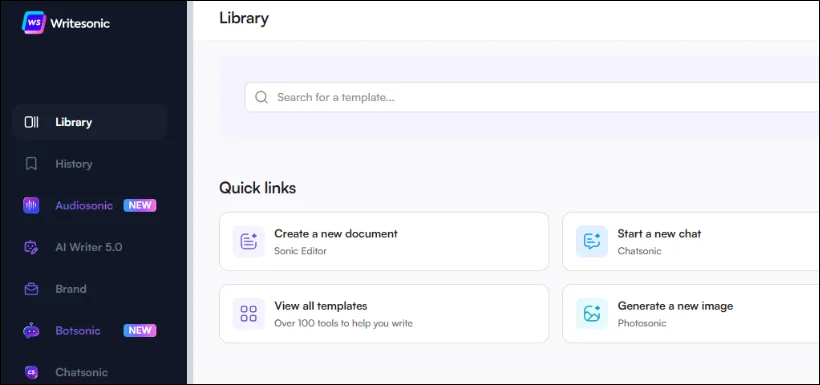
Description: This site has successfully integrated VUI, allowing users to utilize voice commands to browse and communicate, highlighting the trend towards more conversational user experiences.
Trend #5: Microinteractions and Animations
Microinteractions refer to subtle, interactive elements that provide feedback and enhance the user experience.
These small animations, such as button hover effects, loading spinners, and notification alerts, add a touch of delight and interactivity to websites.
In 2025, web designers will continue to incorporate micro-interactions to create engaging and intuitive browsing experiences.
Animations, on the other hand, will be used to bring websites to life and convey information in a visually appealing manner.
From animated illustrations and transitions to complex motion graphics, web designers will leverage animations to tell stories, guide users, and draw attention to important elements.
However, it’s important to strike a balance and use animations sparingly to avoid overwhelming the user.
Example: Motionmarvels
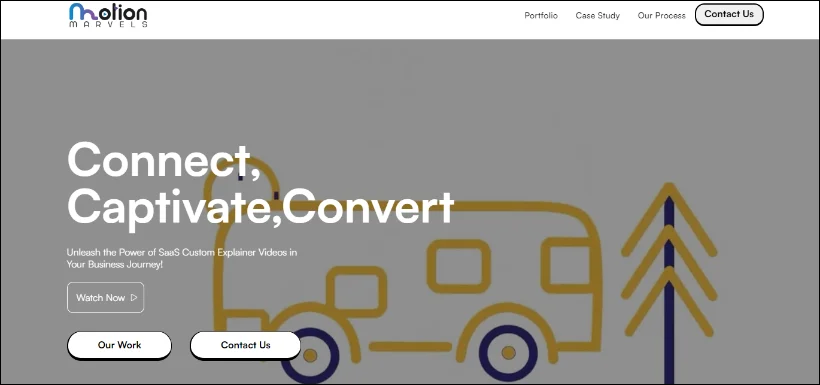
Description: Notice the subtle animations and micro-interactions on this site that enhance user engagement without being overwhelming.
Trend #6: Custom Illustrations and Graphics
Stock photos and generic graphics are becoming less popular as businesses seek to create a unique and authentic brand identity.
In 2025, custom illustrations and graphics will be used extensively in web design to create visually stunning and memorable websites.
These custom elements can range from hand-drawn illustrations to bespoke iconography, infographics, and animations.
Custom images and graphics not only add flair to a website, but they also aid in the visual communication of complicated ideas and concepts.
Businesses may separate themselves from competitors and build a unified brand image that resonates with their target audience by investing in creative images.
Example: Pentagram
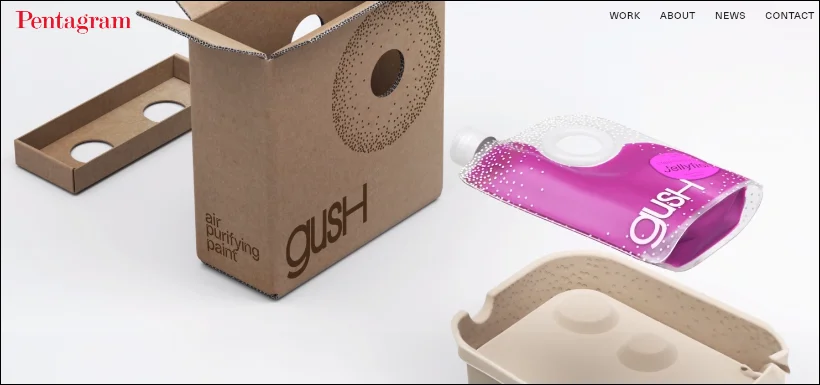
Description: The custom graphics and illustrations on this website create a unique visual identity that effectively communicates the brand’s message and stands out from the typical stock imagery.
Trend #7: Mobile-First Design
In 2025, mobile-first design remains a critical web design trend, and here’s why it’s more important than ever:
The Majority of Internet Users Are Mobile
Prioritizing the mobile user experience is no longer a choice; it’s a necessity, given that mobile devices are utilized by the great majority of Internet users.
Optimizing for Smaller Screens
Mobile-first design means developing websites with mobile users in mind from the start. This technique ensures that websites are not just responsive but are optimized for smaller screens, making content easily accessible and legible.
Faster Download Times
Mobile users value speed. By focusing on mobile-first design, websites can achieve faster loading times, keeping users engaged and satisfied.
Touch-Friendly Interactions
Touchscreens are the primary interface on mobile devices. Touch-friendly interactions are included in the mobile-first design, making it easier for users to explore and engage with the website using gestures.
Businesses that embrace mobile-first design can:
- Reach a Larger Audience: Businesses that cater to mobile consumers may reach a larger audience and extend their online reach.
- Create Seamless Browsing: Prioritizing mobile-first design results in websites that provide a consistent and engaging browsing experience for all users, regardless of device.
Example: Typeform
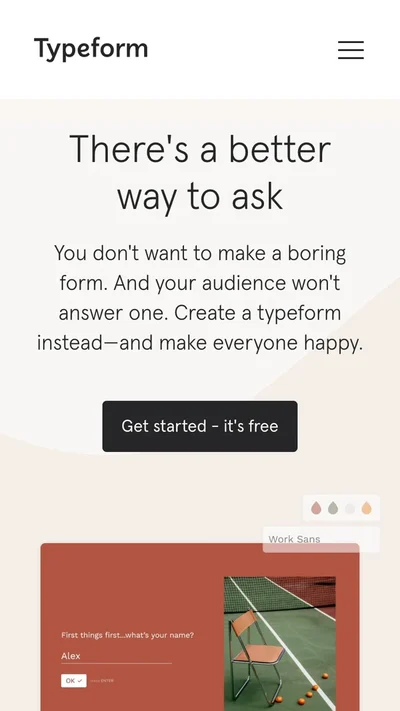
Typeform
Description: This website is a prime example of mobile-first design, displaying optimal performance and layout across various devices.
Trend #8: Virtual Reality (VR) and Augmented Reality (AR) Integration
Augmented reality (AR) and virtual reality (VR) are no longer confined to the world of gaming and entertainment.
In 2025, these technologies will make their way into web design, allowing businesses to create immersive and interactive experiences for their website visitors.
AR and VR integration can be used to showcase products, simulate real-world environments, and provide virtual tours.
An e-commerce website, for example, can employ AR to let customers see how furniture might look in their homes, whilst a vacation website can use VR to provide virtual tours of destinations.
By incorporating AR and VR into their web design strategies, businesses can engage users on a deeper level and provide a more interactive and memorable browsing experience.
Example: Ikea
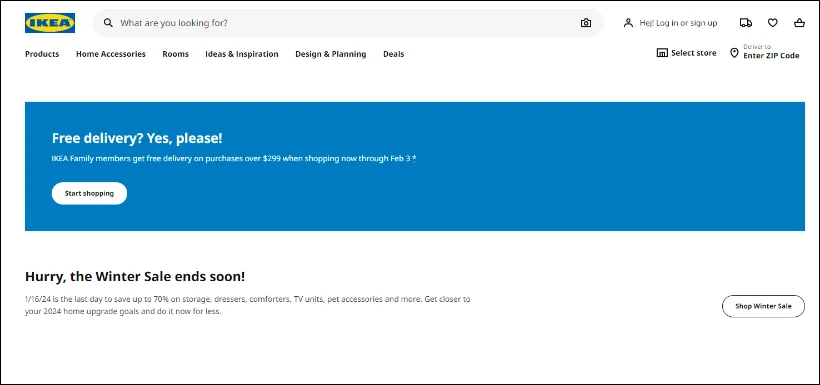
Description: This site’s integration of AR/VR technologies offers an immersive experience, showing how these technologies can enhance online interaction.
Trend #9: Data-Driven Design and Personalization
In 2025, data-driven design and personalization will become increasingly important in web design. By leveraging user data and analytics, businesses can create personalized experiences that cater to individual preferences and behaviors.
Data-driven design enables businesses to give relevant and targeted information to their website visitors, from personalized product suggestions to dynamic content based on user demographics and interests.
Moreover, data-driven design enables businesses to optimize their websites based on user behavior and preferences. A/B testing, heatmaps, and user feedback can be used to identify areas for improvement and make data-backed design decisions.
Businesses may design websites that are not only visually beautiful but also highly effective in reaching their goals by continuously monitoring and changing based on user data.
Example: Myntra
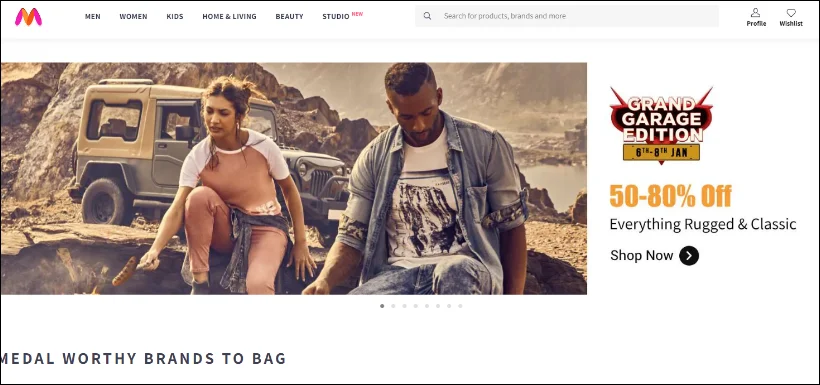
Description: This website utilizes user data to create a personalized experience, showcasing the effectiveness of data-driven design.
Looking For User Experience Design Services For Your Website? Let’s Connect.
Trend #10: Sustainability and Eco-Friendly Design
With the growing concern for the environment, sustainability and eco-friendly design will be a prominent trend in web design in 2025.
Businesses will be encouraged to incorporate sustainable practices into their websites, minimizing their carbon footprint and promoting environmental responsibility.
This can be accomplished through various design choices, such as optimizing website performance for energy efficiency, using eco-friendly color schemes, and promoting eco-friendly products and services.
By embracing sustainability and eco-friendly design, businesses can align their brand values with the growing environmental consciousness of their target audience.
This can result in a better brand reputation, enhanced consumer loyalty, and a good environmental impact.
Example: Softude
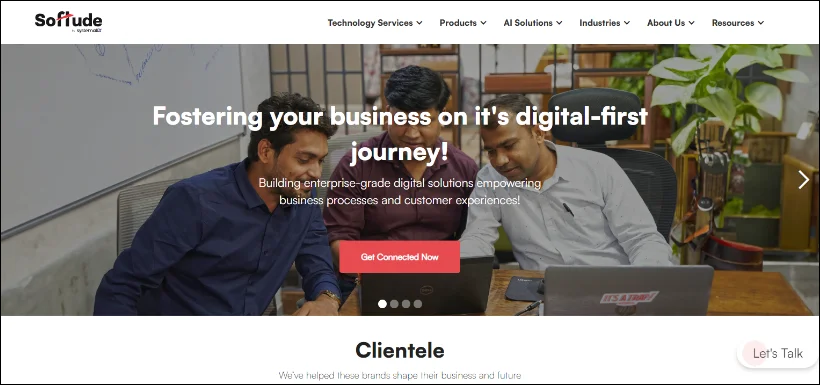
Description: This website utilizes user data to create a personalized experience, showcasing the effectiveness of data-driven design.
Conclusion: Embracing Web Design Trends in 2025
As we move into 2025, web design continues to evolve at a rapid pace. By staying ahead of the game and embracing the top web design trends discussed in this article, businesses can create websites that are visually stunning, user-friendly, and technologically advanced.
From minimalism and dark mode to immersive experiences and data-driven design, these trends will shape the web design landscape in the coming years.
Businesses must keep an eye on these developments and adjust their web design tactics accordingly. By doing so, they can stay competitive in an increasingly digital world and engage their target audience.
Ready to revamp your web strategy? Let’s collaborate to create a website that reflects your brand’s excellence.
EvenDigit
EvenDigit is an award-winning Digital Marketing agency, a brand owned by Softude (formerly Systematix Infotech) – A CMMI Level 5 Company. Softude creates leading-edge digital transformation solutions to help domain-leading businesses and innovative startups deliver to excel.
We are a team of 70+ enthusiastic millennials who are experienced, result-driven, and hard-wired digital marketers, and that collectively makes us EvenDigit. Read More

